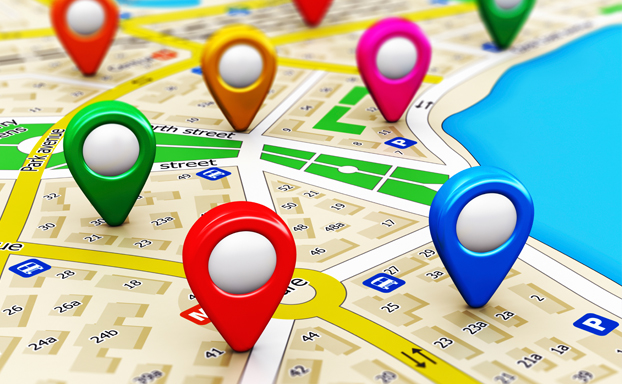There is a conversation happening around your location, and it’s essential that you’re a part of it. 60 percent of your customers are utilizing their mobile devices to get in touch with others about your brand through applications, GPS and review searching. This dialogue revolves around something your business is producing, and it’s known as location-based data.
Your brand should be doing as much as possible to reach customers where they’re at while maintaining cross-platform consistency, especially since 40 percent of them are on-the-go while searching for you. Maintaining a uniform presence with your location-based data will create consumer confidence, boost your visibility, and ultimately drive in-store sales—which are higher than the 27 percent that occur online.
There are steps you should be taking to reach this uniformity that will ultimately lead to increased visibility and greater success for your business. The key to improving your local data is creating consistency for your customers.
With the boom of social media usage, your marketing team is doing what they can to perfect your brand presence on multiple channels like Facebook, Twitter and LinkedIn, not to mention your company website. All of these platforms have different methods for reaching your customers, which can make consistency a challenge.
However, you should know that there are services available to you that will consolidate your accounts across the web in order to monitor customer engagement. This system will provide a dashboard that pinpoints inconsistencies in your information—like those details provided in something called NAP (name, address, and phone number)—and offer easy-to-follow solutions for improving your local data.
Now, you might be wondering, “How confusing can it be when our locations have existed at the same intersections or plazas for years?” Consider for a moment the social media platform, Instagram. As of December 2014, there were 200 million users active on this mobile application, and that number has only grown since. Users are allowed to take photos and tag your business’ name at any location, even if it isn’t yours, so your brand is being tied to inaccuracies.
Also quite recently, Instagram added a search function to their website, meaning potential customers can search for your location tags online as well as on their mobile device, making it that much more important for you to maintain uniformity. After all, your business will only achieve success if your customers know how and where to find you.
Once all of your interactions are consolidated into one dashboard, you will be able to analyze who is saying what about you so that you can respond accordingly. Your reviews are important whether they are good or bad, and they are impacted by the experience your location-based data provides. Think about it—if you’re looking for a specific product or service, you want to be able to find it as soon as possible.
If you search for a store or restaurant online, then make the effort to drive to their location only to find that they are closed, no longer offer what you’re looking for or have moved, are you going to be a satisfied customer? My guess is, probably not. That’s just one more way consistent local data can benefit you; by improving your customer’s experiences with your business.
When you sharpen the local data being offered to your customers, you’ll be able to drive in-store sales and increase your bottom line. One way of doing so is by leveraging this “small data” (golden nuggets of information about your business) to reach impulse shoppers.
When a customer is provided accurate information, the visibility of your location will increase. This means that when a potential customer is impulse shopping nearby, you’ll be able to reach out to them through mobile advertising to convert their spur-of-the-moment searching to actual sales. Location-based data puts the customer at the threshold of your business, and—once they are there—it is much easier to persuade a new purchase by offering a coupon or deal based on their previous purchase.
Strengthen your local presence and build meaningful relationships with your customers by creating a consistent experience for them. Monitor your data and reviews through a dashboard that combines all of your online accounts in order to improve your location-based information. Don’t just compete with your competition, outcompete them. Take the opportunity to get ahead by giving your customers quality and accuracy.




